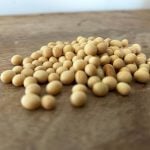
Tag Archives Fungicides

Pasmo in flax every year, but severity varies
That makes decisions about applying a fungicide to protect the crop challenging sometimes
Warm temps make for good growth, crop insect and disease stress seen low
Manitoba Crop Report and Crop Weather report for July 4, 2017

Heads up on fusarium head blight
Early flowering is the time to apply a prophylactic fungicide on wheat but first assess the field’s disease risk

Alfalfa weevil levels rapidly decline, high levels of pea aphids still seen
Manitoba Insect & Disease summary for July 13

5 tips for fungicide application
If you've decided to spray, make sure you get the most out of your investment

Soybeans — the ‘kitchen sink’ strategy works, but…
Ontario trials suggest early seeding is the best and cheapest management practice

Soybean white mould control options limited
In contrast to canola, there are only four products registered

Manitoba Crop Report and Crop Weather report: Issue 12
Conditions as of July 20, 2015

VIDEO: Count your flowers before deciding to spray canola for sclerotinia
Crop Diagnostic School: Whether your pants get wet when walking through the field can tell you if it's a good time to spray a fungicide

Manitoba Crop Report and Crop Weather report: Issue 11
Conditions as of July 13, 2015


